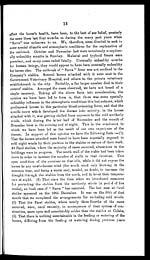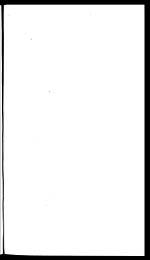Medicine - Veterinary > Civil Veterinary Departments > Civil Veterinary Department ledger series I-VI > Volume IV - Horse surra
(416) Page 14
Download files
Individual page:
Thumbnail gallery: Grid view | List view

14
when surra was unknown to us, or which can, in our opinion, in any
way account for the outbreak.
In connection with the exposure of the horses to cold winds, and our
opinion that the chill to the system therefrom resulting was the imme-
diate factor producing activity in the disease, we may mention that out
of 8 horses working as "helping" horses on the Byculla Bridge, no less
than 3 were attacked with 'Surra,' and of these, 2 were attacked upon
the same day. Compared with the work most of our horses do, the
work of these particular horses was light, and they were in specially
good condition and of exceptionally fine physique. These horses are
attached as additional horses to help in pulling cars up the inclines on
the bridge. After pulling up a car, they return to the little waiting
sheds provided for them at either end of the bridge, and stand usually
about five minutes, until another car approaches.
On examining these sheds, we found them a good deal exposed to
the north wind. We have now protected them, but it is easy to under-
stand how in the early morning, or between 7 P.M. and 11 P.M. at
night, these horses, after getting warm at their work, would be specially
liable to chill when standing waiting in sheds, until recently not very
well protected from cold winds.
In the plains of America it has been noticed that in certain thinly-
populated districts, where fever was prevalent, the introduction of rail-
way tracks and the passage of trains has modified the sanitary conditions.
The theory in explanation of this fact is that the displacement of air
caused by the rapid passage of the train creates a vacuum and consequent
draught, and that a rush of fresh air is, in this way, introduced. In
other words, the train produces a sort of artificial wind. The track of
the Great Indian Peninsula Bailway passes immediately behind our
Parel premises, distant only 75 feet from the stables. About 2,000 feet
further to the north, the flats commence and are crossed by the trains.
In this memorandum we are anxious to enumerate all possible influences
which may have served in the production of the recent outbreak of surra.
It is perhaps worthy of consideration whether the Great Indian Penin-
sula Railway track, which very shortly after leaving the marshy land of
the flats passes our Parel stables on their north-western side, does not
act as an air-channel from the one to the other. The line of horses
standing next to the railway was the line in which the "Surra" was by
far the most prevalent.
A conjecture has been put forward by some veterinary authorities
in India that there is a connection between "Surra" and rats. A para-
site has been found in the intestines of rats, which is similar to the para-
site noticed in the blood of horses suffering from surra. It is suggested
that where rats have access to grain, it becomes contaminated with their
Set display mode to: Large image | Zoom image | Transcription
Images and transcriptions on this page, including medium image downloads, may be used under the Creative Commons Attribution 4.0 International Licence unless otherwise stated. ![]()
| India Papers > Medicine - Veterinary > Civil Veterinary Departments > Civil Veterinary Department ledger series I-VI > Horse surra > (416) Page 14 |
|---|
| Permanent URL | https://digital.nls.uk/75517138 |
|---|




